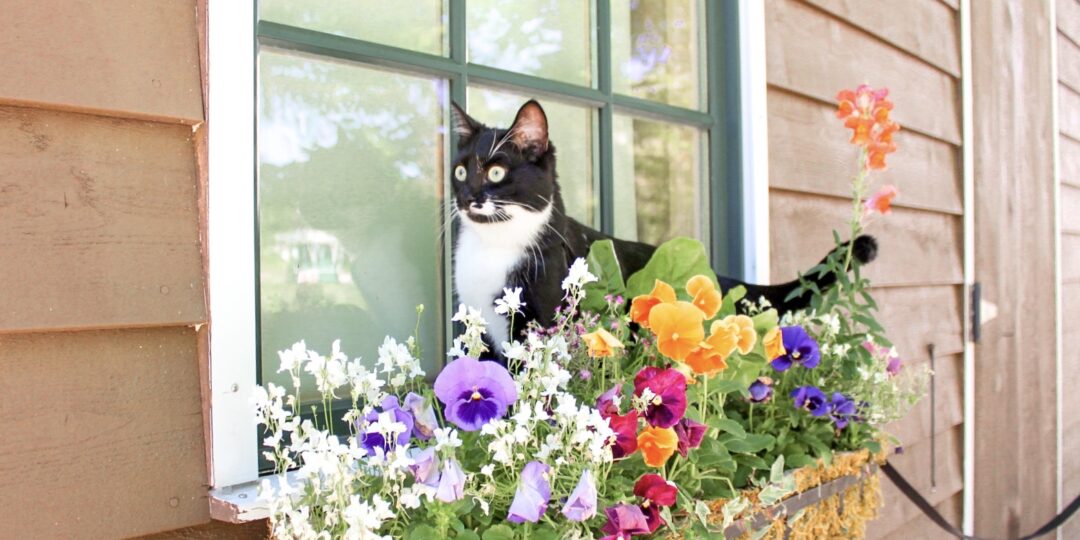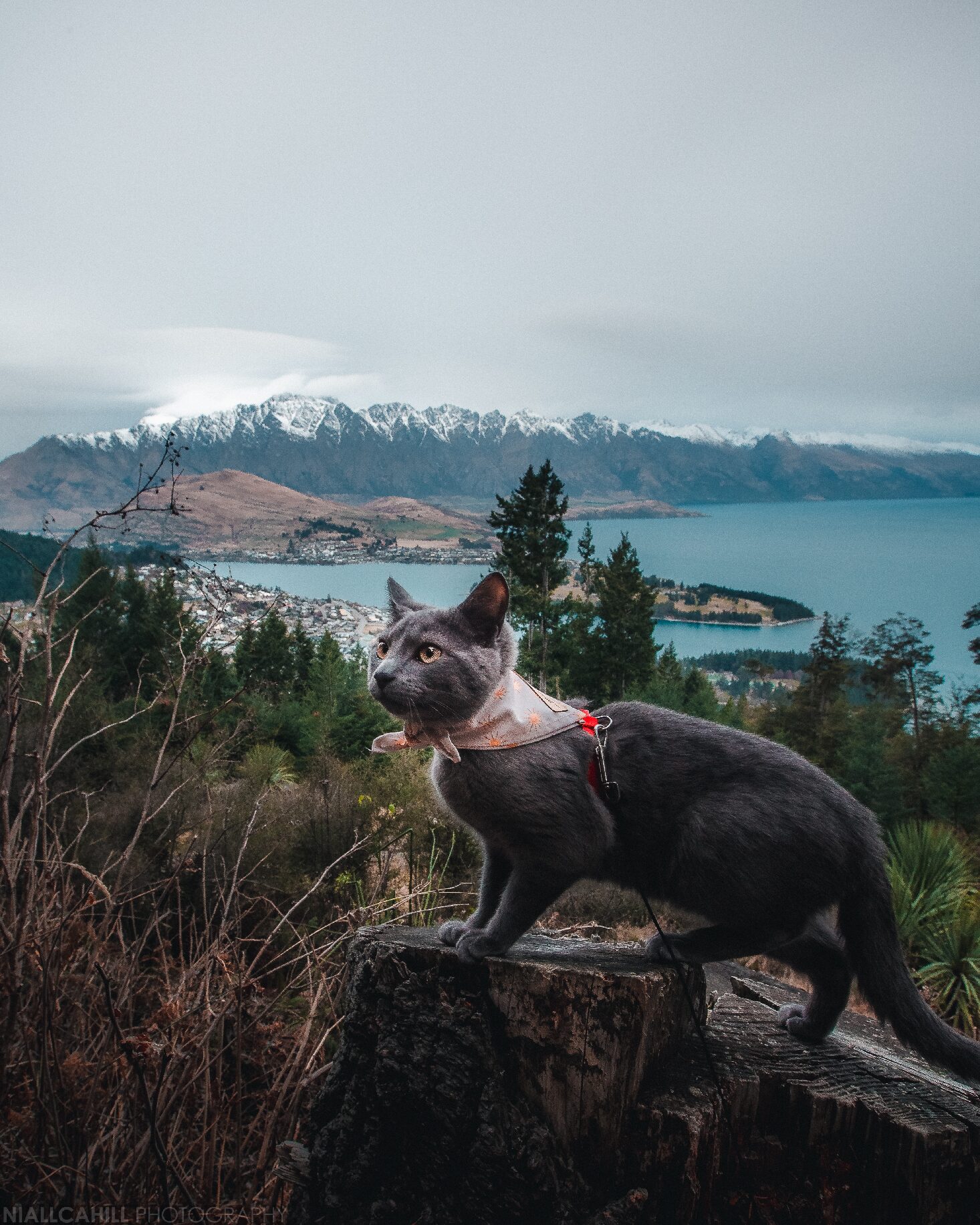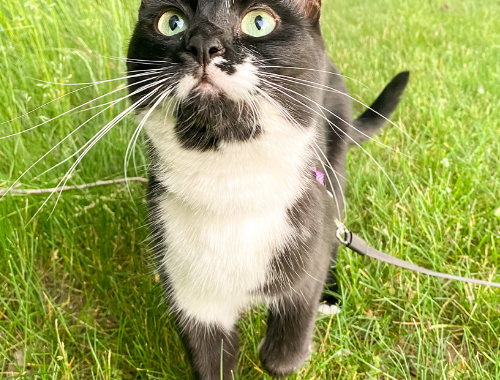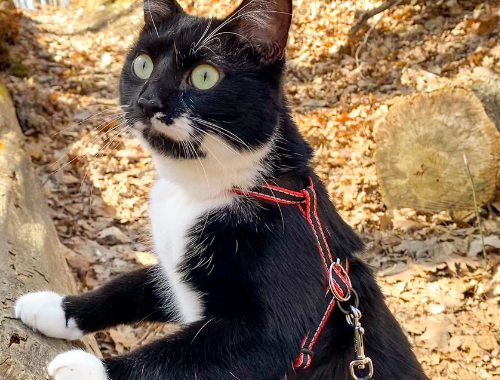
WHAT PLANTS TO AVOID WITH YOUR CAT
There are many plant species out there that are harmful to our cats and should be avoided, whether it is in your house, yard, or out on a hike. Your cat does not necessarily have to eat the plant itself to experience the toxic effects. If your cat has brushed up against it or rolled in poisonous plants and then groom themselves later, they can ingest the toxins that way.
It is impossible to know how to identify every single plant and remember which are toxic and which are not.
We recommend having an app on your phone to help you.There are a few plant identification apps available to download for free that can help you determine what plant you are looking at. Search for “plant identification” in your app store and you can see a few come up. You can then snap a photo of the plant in question and it will tell you the name of it. After you know the plant, you can turn to google to see if it is toxic to your cat. You can also get the Animal Poison Control Center app on your phone. There, you can look up all known poisons to animals, and check to see if the plant is on there. This app is great for other toxins as well, not just plants! The Animal Poison Control Center also has a list on their website of all toxic and non-toxic plants that you can check out here. You can also call the Animal Poison Control number at 1-888-426-4435, although there may be a consultation fee to speak to someone.
Some common signs that your cat may have ingested a poisonous plant include, but are not limited to:
- Vomiting and/or diarrhea
- Excessive salivation/drooling
- Seizures/twitching/muscle spasms
- Breathing difficulties
- Not eating or drinking
- Lethargy
- Bloody stool
- Inability to urinate (straining or painful)
- Irregular heartbeat
- Collapse or comatose state
- If severe or left untreated, death
Some common household and outdoor plants that can be very toxic to your cat:
- Lilies
- Considered to be highly toxic to cats and the most common plant to cause poisoning in cats. The entire plant is toxic, and eating a small amount of any part of the plant can cause serious issues. If left untreated, these can cause kidney failure and death. It is best to bring your cat to a veterinarian immediately if caught nibbling on a lily.
- Castor Beans
- These plants are one of the most poisonous plants in the world. The entire plant is toxic, especially the beans.
- Caladium (AKA elephant ears)
- When chewed, these plants release calcium oxalate crystals that can cause tissue damage in your cat. This is also one of the top plants that cause toxicity reactions in cats.
- Dieffenbachia (AKA Dumbcane)
- This is a very common plant in homes and offices. The entire plant is toxic. The sap can cause skin or eye irritation if contacted.
- Larkspur
- Typically only toxic when young and as the plant reaches maturity, they become less toxic. They block the neurotransmitter acetylcholine and can cause heart failure.
- Sago Palm
- This plant is becoming more common for people to get for their homes, so there has been an increase in pet toxicities to it. Though the seeds are the most toxic part of the plant, the entire thing is considered toxic. If ingested, they can cause blood clotting issues and damage the liver.
- Azaleas and Rhododendrons
- Both are very common plants in people’s yard. Every part of the plant is toxic, with the leaves being the most dangerous to ingest.
- Tulips
- Popular plant for flower arrangements and in people’s yard. The bulbs are the most toxic part of the plant, however the whole thing is considered toxic and should be avoided.
- Daffodils
- A common plant to run into outside and can be in homes and offices. The entire plant is highly toxic to cats and care should be taken to keep your cats away from them.
- Philodendron
- A very common house plant. If chewed, the plant can cause burning and ulcers in your cats mouth and to their tongue.
- Oleander
- Most commonly found outside and can be very toxic. The entire plant is toxic, but especially the leaves.
- Aloe and Milkweed
- Considered to be mildly toxic to cats and dogs. Just be aware of this, as some people use both of these for medical use on themselves, but be sure to avoid on your cat.
Keep in mind that our list is not all inclusive of poisonous plants to cats. When in doubt, it is best to not let your cat near the plant. We recommend researching pet-safe plants before bringing them into your home or in your garden. If you already have a plant that is toxic to your pet in your house or yard, it is best to remove the plant.
Disclaimer: this page is not meant to provide veterinary advice. Many factors determine the severity of toxicity to your cat. If you have any concerns that your cat may have eaten a poisonous plant or your cat is experiencing any of the above symptoms, call your veterinarian immediately to be seen.


MEET NUGGET
You May Also Like

Best Tips For Building Trust With Your Cat
June 18, 2021
TOP 10 WAYS TO KEEP YOUR CAT COOL DURING THE SUMMER HEAT
June 26, 2020

